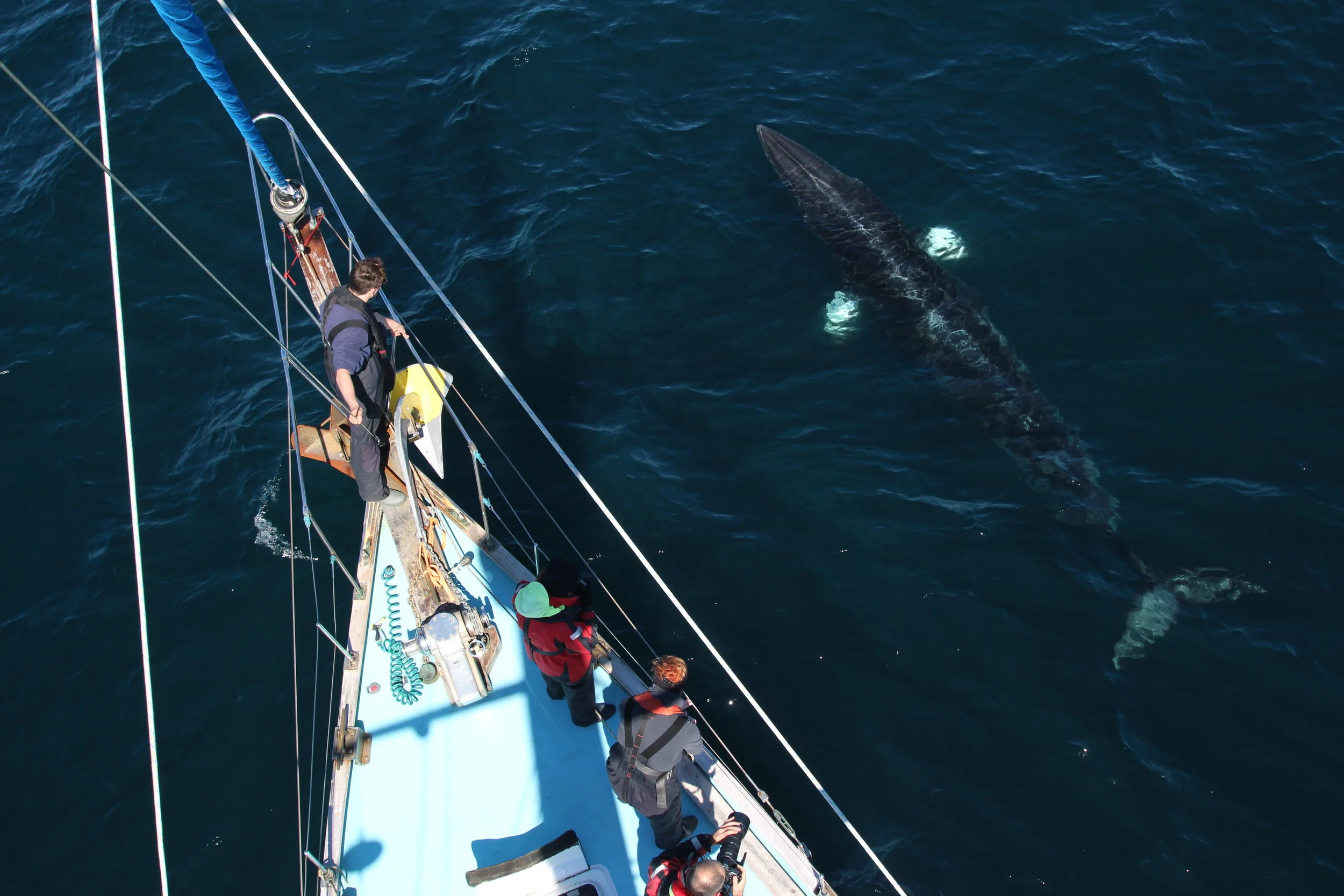*PRESS RELEASE* Record numbers of common dolphin sightings off Scotland’s west coast
Commn dolphin spotted from Silurian
Sightings of common dolphins across the Hebrides have reached a new record high according to research conducted by marine conservation charity, Hebridean Whale and Dolphin Trust.
Evidence collected during marine research expeditions on the Trust’s specialized research yacht Silurian in 2017 has revealed a dramatic 24% increase from the previous year’s already record-breaking figures.
The findings were made in a research season running from April to October 2017, part of the charity’s unique long-term citizen science project monitoring whales, dolphins and porpoises – collectively known as cetaceans – and basking sharks in the Hebrides.
“We have never documented so many sightings of common dolphins off Scotland’s west coast before. Our findings highlight the importance of on-going monitoring and research to strengthen our understanding of what is taking place in Hebridean waters. It is hard to say what is causing this increase, but a rise in sea surface temperatures linked to climate change could be playing a role.”
During 2017, the Trust recorded 93 sightings of common dolphins – its highest total ever, up from 75 sightings in 2016. The encounters included a total of 1,340 individual animals – down from 2016’s high of 2,303, due to smaller group sizes and fewer super pods.
Over the past two years, the charity has also recorded a higher than average number of sightings of white-beaked dolphins – with 14 sightings of 74 individuals in 2017. Generally preferring colder, deeper waters in the North Atlantic, white-beaked dolphins have distinct white noses. These fast, acrobatic swimmers are usually spotted further away from the coast – favouring sites around the Outer Hebrides, and usually seen in groups of five to 20 individuals.
A rare shot of a white beaked dolphin, spotted by a Silurian volunteer
Lauren Hartny-Mills said: “Silurian is more frequently travelling further north in her surveys, with trips now departing from Ullapool. This could explain why more white-beaked dolphins are being spotted each year. It also highlights the need for further research in the far north of our survey area, where white-beaks reside.”
The 2017 survey season – which recorded nearly 3,000 whales, dolphins, seals and sharks during more than 1,100 sightings – also saw large numbers of minke whales, with 62 sightings of 80 individuals, and Risso’s dolphins, with eight sightings of 58 individuals. These sightings are similar to numbers recorded in previous years.
The harbour porpoise was the most commonly seen species – as has been the case every year since the Trust’s surveys began – with 363 sightings of 621 individuals.
Harbour porpoises - the most commonly sighted cetaceans from Silurian.
The annual expeditions depend on paying volunteers. In 2017, 75 volunteers worked alongside marine scientists, conducting visual surveys and acoustic monitoring with underwater microphones or hydrophones, and identifying individual cetaceans through photography.
The 2017 season marked an important milestone for Silurian, with the yacht surpassing 100,000km of effort-based survey – the equivalent of sailing two and a half times around the world in search of whales and dolphins.
Other highlights of the season included an encounter with three inquisitive minke whales, which circled and followed Silurian in picturesque surroundings after four rough days at sea.
Silurian volunteers encounter three inquisitive minke whales.
Hebridean Whale and Dolphin Trust has been monitoring marine megafauna in the Hebrides since 1994, and from Silurian since 2002. Its surveys are partly funded by a grant from Scottish Natural Heritage, which supports the role of citizen science in better understanding Scotland’s seas.
Fiona Manson, a marine specialist at Scottish Natural Heritage, said:
“Volunteer citizen scientists make an important contribution to marine conservation in Scotland. We are delighted to see the research expeditions on Silurian continue to run year after year, and that volunteers are getting to see more and more whales, dolphins and porpoises in our seas.
The exciting range of marine wildlife in Scottish waters is a huge draw for visitors to our coasts, and is a fantastic way of connecting people with nature. Scotland’s network of Marine Protected Areas – including Europe’s second largest protcted area for harbour porpoise in the Inner Hebrides and the Minch – aims to ensure that these amazing animals remain here for future generations to enjoy.”
Hebridean Whale and Dolphin Trust is the only organisation collecting long-term data on such a large scale on Scotland’s west coast. Its volunteers and scientists have now recorded more than 30,000 marine mammals and sharks. A short film about the surveys can be seen at https://youtu.be/M_3r-GKfh8o.
The Trust is recruiting volunteers to work as citizen scientists on board Silurian for periods of one to two weeks from April to September 2018. Participation costs cover boat expenses, accommodation, training, food and insurance, and support the charity’s research. For details, contact volunteercoordinator@hwdt.org, call 01688 302620, or click the button below.




